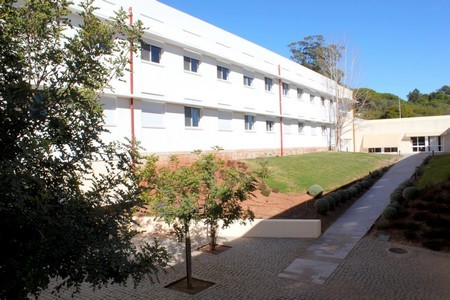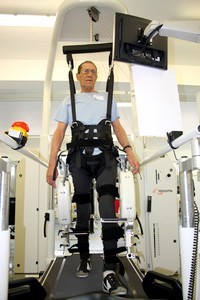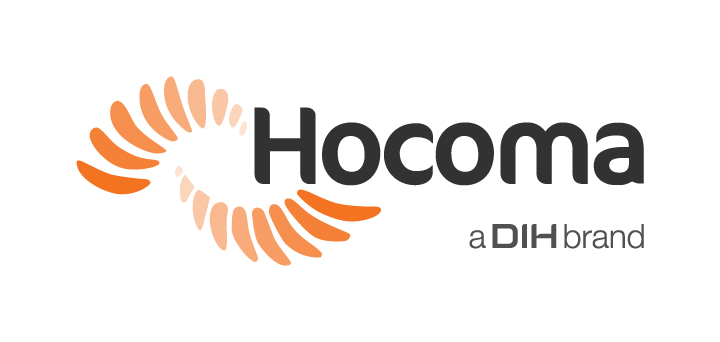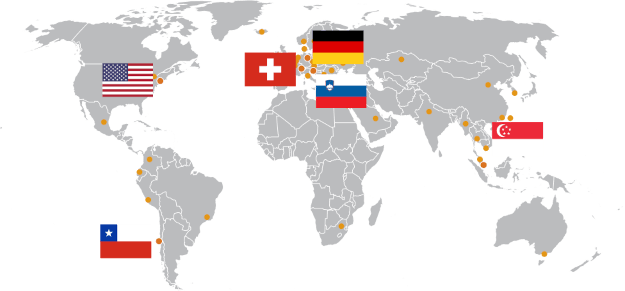November 21, 2013
Clinical Experience with the Lokomat®: Application of the Lokomat in Patients with Ataxia

Diana Santos Sul, Portugal
Centro de Medicina de Reabilitação do Sul, Portugal
We are a specialized rehabilitation unit for the hospital referral network of the National Health Service in Portugal. Located in São Brás de Alportel, the CMR Sul is the only entity of its kind in the Iberian Peninsula, the first accredited in Southern Europe and the ninth in Europe awarded with CARF accreditation (Commission on Accreditation of Rehabilitation Facilities), an independent international certification of rehabilitation units.
Our Organization
The main goals of the CMR Sul are:
- return the patient to as independent a lifestyle as possible
- prevent future complications
- keep the patient active and motivated
To achieve this purpose, an interdisciplinary team contributes to the patient rehabilitation program. It includes Rehabilitation and Internal Medicine, Physiotherapy, Occupational Therapy, Speech Therapy, Nursing, Psychology, Social Work, Nutrition and Dietetics.
The treatment plans are individually tailored to meet the goals and objectives agreed upon between the rehabilitation team and the patient. They combine a variety of therapies, with an emphasis on locomotor training, including with the Lokomat.
Recommendations for Clinical Practice
Locomotion therapy supported by the Lokomat has established itself as an effective intervention for improving overground walking in patients with impaired motor function caused by neurological diseases and conditions. Today, studies and clinical recommendations guide professionals in their daily practice and support them in their decision-making process. However, these studies mainly relate to individuals treated following stroke, spinal cord injury, traumatic brain injury, or diagnosed with multiple sclerosis or Parkinson’s disease. So why not use this tool in a specific syndrome that could be present in different pathologies?
In order to establish training parameters, a literature review was conducted on this subject, concluding that there are few studies and little scientific evidence in this area.
We are an expert group of six physiotherapists with experience in Lokomat training and we are currently preparing recommendations for locomotion therapy in ataxic patients. We aim to assess the effectiveness of these recommendations in order to gather more evidence on the use of the Lokomat and the adequate parameters for this patient group. The objective is to establish guidelines that will help standardize our clinical practice in this specific group of patients and ensure good practices within and between users, based on our clinical practice and academic knowledge in neurological rehabilitation. The development of these recommendations is still in an experimental phase.
Prescription Criteria
Regarding the indications for gait training with the Lokomat in ataxic patients, it was considered that they should have sufficient trunk control to maintain an adequate posture during training.
Trunk stability is based on three subsystems: passive (inert structures/bones and ligaments), active (muscles), and neural control. The three subsystems are interrelated and in neurological patients a dysfunction of the neural control is present. The proximal stability, specifically trunk control, allows selective movement in the lower limbs, thus enabling coordination and minimizing ataxic components of movement.
Therapy Goals
In ataxic patients movement coordination is impaired.
The main therapy goals with Lokomat gait training in addition to conventional physiotherapy in ataxic patients is:
- improve gait performance
in order to provide a functional gait in a real context, both at home and in society.
Patient Evaluation and Progression
The gait pattern and specific gait characteristics are evaluated before beginning the Lokomat training and after the last training session, in order to gather the information needed to determine the therapy goals and training parameters for the Lokomat.
A training progression is determined based on the initial gait pattern, patient characteristics and criteria found in the literature review.
Parameters During the Training Session
Very high values of speed and % of body weight support (unloading) are documented in the literature, but, based on our clinical practice, we believe that the main goal in this condition is to enhance the quality of movement in gait resulting from integration of afferent input provided by the training.
With ataxic patients, we recommend low speed and unloading during the training.
Integration in the Rehabilitation Program
We believe that Lokomat training alone should not be used in the rehabilitation of patients with ataxic gait, because of the deficits in motor control and coordination present in this patient group.
Therefore, it was established that every patient receiving Lokomat training should also receive specific conventional therapy before and after each Lokomat session.
Accordingly, it was determined that before each Lokomat training patient intervention should be based on postural control, focused on trunk activation and proprioceptive training of proximal joints.

After Lokomat training, patient intervention should focus on the standing position, activation of the trunk on lower limbs in preparation for walking, which should be facilitated by the physiotherapist.
This clinical experience report is meant to serve as an example of how the Lokomat is integrated into the clinical setting in one individual hospital. It is not necessarily a standard recommendation from Hocoma.


